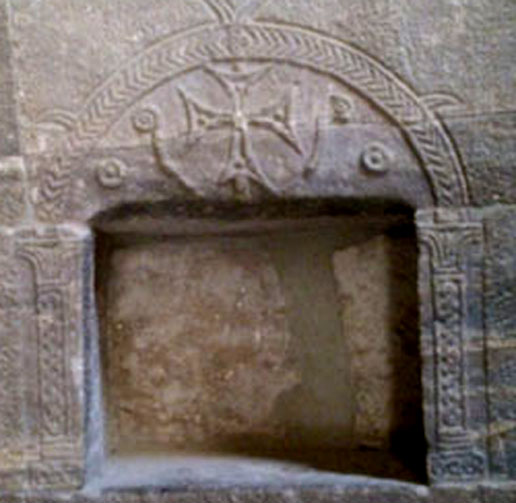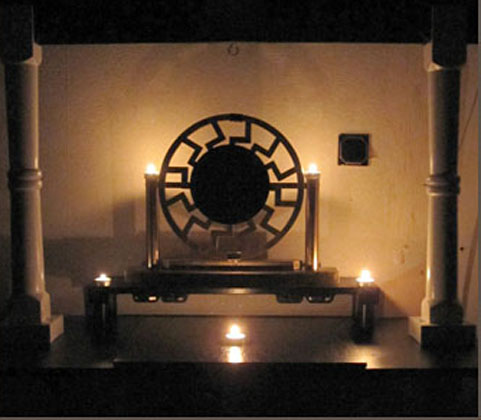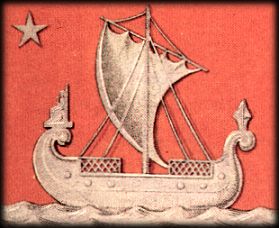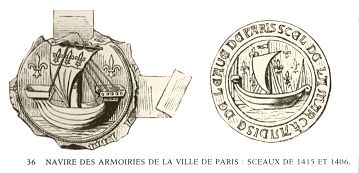It looks like you're using an Ad Blocker.
Please white-list or disable AboveTopSecret.com in your ad-blocking tool.
Thank you.
Some features of ATS will be disabled while you continue to use an ad-blocker.
share:
I'll present here a considered study on aspects of the Thule Temple tradition in particular the Revelations of Isais, the Dualistic Gnostic
background to this group, and also look to any historical roots for this cult, and it's wider associations.

First an overview of the Isais tradition;
An overview
An engraving supposedly from the Middle Ages shows Isais in two aspects, long haired and girlish, and short haired. The second aspect relates to her adopting this boyish disguise to recover the Black Stone which had been stolen from Valhalla by the Beings of Shadow.
This was her revelation;
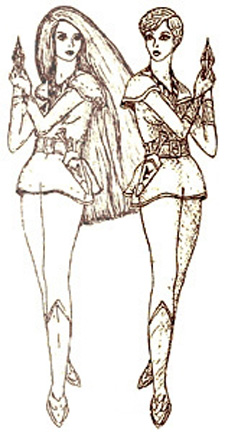
Revelation of Isais
As noted in the overview other revelations followed, this one supposedly in 1236 in the vicinity of Carthage;
Here it is made known that she is an aspect of Ishtar;
First Templar Revelation
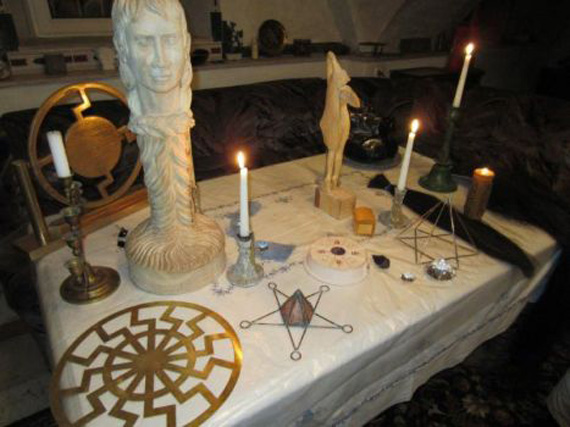
The associated artifacts of her cult are;
Gifts of Isais
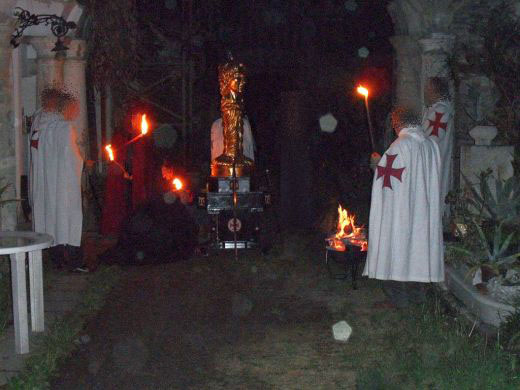
The most important of these is considered to be the Black Stone;
The Black Stone

In other Thule Temple documents it is plain that creation is seen as of the Masculine and Feminine Principles in tandem, hence the iconography of the Baphomet figure, a two sided male and female cultic artifact.
Ilu Asherah
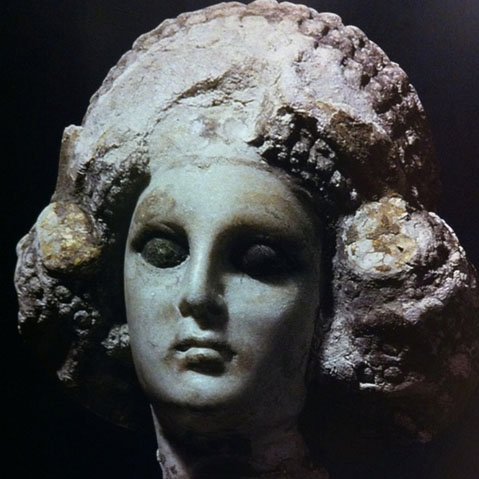

First an overview of the Isais tradition;
In 1220, Templar Komtur Hubertus Koch, returning with a small party from the Crusades, passed through Mesopotamia, and near the old city of Nineveh in modern Iraq, received an apparition of the goddess Isais (first child of goddess Isis and god Set). She told him to withdraw to the Untersberg mountain, build a house there and await her next apparition.
Whether that is true or not, in 1221, Koch erected his first Komturei at the foot of Ettenberg near Markt Schellenberg. A second, larger structure followed. It is believed that over the next few years, underground galleries were excavated into various areas of the Untersberg, and in one of them a temple to Isais was built
A second apparition occurred in 1226 and were repeated on occasions until 1238. During this period the Templars received "Die Isais Offenbarung", a series of prophesies and information concerning the Holy Grail.
It is the German tradition that the Templars were ordered to form a secret scientific sect in southern Germany, Austria and northern Italy to be known as "Die Herren vom Schwarzen Stein" - The Lords of the Black Stone
The Holy Grail ("Ghral" is holy stone, Persian-Arabic) was said to be a black-violet crystal, half quartz, half amethyst, through which Higher Powers communicated with humanity. It was given into the safe-keeping of the Cathars, and smuggled out of the last stronghold at Montsegur, France, and hidden, by four Cathar women on the night of 14 March 1244.
An overview
An engraving supposedly from the Middle Ages shows Isais in two aspects, long haired and girlish, and short haired. The second aspect relates to her adopting this boyish disguise to recover the Black Stone which had been stolen from Valhalla by the Beings of Shadow.
This was her revelation;

Truth I speak - for your hearing.
Vision I give - for your seeing.
Speaking knowledge and wisdom, all possessing,
from the pre-beginning until the end of the end.
Speaking neither allegory nor symbol,nor indirect word,
clearly I give lore, of that which was, of that which is.
Human being, because connected to earth,
given over to mortality- but at the same time.
Star children, heavenly born -
a thousand fold times more older than the world here.
Light force sons and daughters of brilliance,
Heaven dwellers lost in darkness.
Light animated - but succumbed to shadow,
immortal - but not free of dying.
Wanderer over the horizon of the worlds,
new born into this world - but destined for beyond.
Children of God, but not godlike.
Much more there is to say about it.
Old is their child - young is their world.
The unborn human being,
existing since the pre-beginning, that much i can say.
Revelation of Isais
As noted in the overview other revelations followed, this one supposedly in 1236 in the vicinity of Carthage;
In 1236, the knights and Roderich Emmerant searched the area of the former Carthage after traces of Marcion. because they received "The message of the goddess".
Her appearance was as a structure made entirely of gold and light and ultra fine textured shimmering green glass, the tall figure of a woman, whose translucent body of slenderness was flexible; and appeared as a strange creature, half woman and half girl, . without doubt she could not be of this world
she was wearing a long gown made entirely of small golden leaves in an elongated shape; her beautiful face was thin and pale and utterly wonderful, she caught their eyes, hair and the nails of her fingers shone in colors brown amber, whilst a golden circlet held her hair, which reached down to the ground, very long, and above on the headband was a golden horned crescent moon, and this was also in the midst of the golden sun.
Her lips seemed to glow. And she was the most beautiful picture, which a man has ever seen. and she was translucent and not of human kind .
And she took two steps towards us, and she smiled and her eyes were full of kindness. we knew that she was not a devil, but rather only good things had to be with her. Her form became clearly visible and then she spoke to us, and her voice was clear and mild.
Here it is made known that she is an aspect of Ishtar;
"I called you - without you knowing it; . you came - without it being known to you
Now that her words had broken a spell , I spoke too and asked her who she was then. . and she answered immediately, "I'm Isais...Ishtar
The people who once worshipped here in this place used to call me Asherah; people in the North who were your ancestors called me- Idun - and so i was given a name by every people after their language.
We were surprised but she smiled. Then said the Emmerant that we are true to our Lord Christ and never another deity wanted to pay homage to
"Well I heard your prayers to him, the divine brother .But he is in his kingdom, and therefore is in absence, but I, the Divine Sister, am back here - for a little while
First Templar Revelation

The associated artifacts of her cult are;
You, my faithful followers, have the spear. You, my faithful followers, you possess Ishtars mirror, you shall use it in beholding , I also gave you the highest power, the black purple stone.
From the initial sun rays ball ground powerfully. The Stone carefully wrap it in this hair from my head. well preserved for the hour , the time! The stone brings the Golden Empire.
Gifts of Isais

The most important of these is considered to be the Black Stone;
The black-purple stone
Born mighty god,
It is wisdom and strength,
power is divine light;
given from the hand of Allfather
in Valhalla castle.
The gods watch over him there.
The Black Stone

In other Thule Temple documents it is plain that creation is seen as of the Masculine and Feminine Principles in tandem, hence the iconography of the Baphomet figure, a two sided male and female cultic artifact.
What was before everything was, which created before was uncreated, which was eternally without cause and without beginning and without end is eternal;
which worketh in all that is true being and life force of all living things: What is above all alone and what makes everything alone:
This is not a God, It has neither name nor is it person, that is not the one - These are two -
These are the two Iluhe , what are the god-like powers of the masculine and the feminine
Ilu Asherah

The concern then is with a Dualistic Theology, with Isais as the Divine Sister of Revelation, in tandem with Jesus as a Divine Brother of Revelation,
these as intermediaries of the Dualistic Creators, and represented by the Baphomet idol.
I'll quote at length here an article which looks to establish a link between a Germainc Goddess Isa and Isais;
Aryan Myth
There is merit in this argument because there is a similar confusion/merging of a Celtic Goddess Isa with Isis, as the tutelary Goddess of Paris, again this centres on a boat cult;
Isis of Paris
The problem here for derivation from Isis of Egypt, is that here Isias was the tutelary Goddess of the tribe that founded Paris, the Parisii, who held lands along the Rhine, the Seine, and the Humber;
www.roman-britain.org...
With this i think it is plain that there was a Celtic/Germanic Goddess named Isa, that her cult was associated with ships and passage into and out of the Underworld, an intermiediary between realms.
The boat of Paris is generally considered to be indicative of the Stella Maris, Sirius the star of the sea, a psychopomp with regards to entrance into the underworld, and this being Paris, the boat is also associated with the arrival of Mary Magdalene onto the shores of France.
It seems likely that Mary Magdalene became seen as the embodiment of the Isais intermediary in France, and thus supplanted any independant Isais cult.
The Isis of Paris had association with Artemis of Ephesus, as did Mary Magdalene who is understood to have lived in the city of Ephesus itself, as well as landing at Marseille which had a sister Temple to Artemis of Ephesus, see here;
The Magdalene Mystery
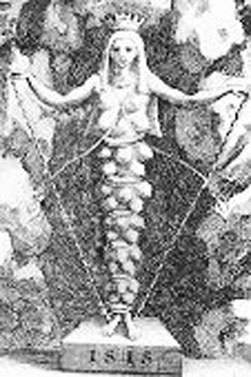
I'll quote at length here an article which looks to establish a link between a Germainc Goddess Isa and Isais;
Jacob Grimm in his Teutonic Mythology volume 1 refers to a German Goddess called Zisa. He found references to this Goddess going back to the 11th century CE
Grimm says that the older spelling of Her name is Cisa and "that she was most devoutly worshipped by the Suevi" and Her great feast day which consisted of games and merrymaking was held on 28th September. Grimm speculates that Zisa/Cisa is the same divinity as Isis who is referred to in Tacitus` Germania 9.1: "Part of the Suebi sacrifice also to Isis; I have not ascertained the source from which the foreign rite originates, but the fact remains that the image itself, fashioned in the form of a light ship, proves that the cult is imported." It is more than likely that this Goddess was not foreign or imported but really another case of Tacitus ascribing a Roman name to a local Germanic deity which he does to other deities in his work. Rudolf Simek in his Dictionary of Northern Mythology suggests a link with the West Germanic Goddess Nerthus and the Frisian Nehalennia because of the association with the ship.
igel Pennick[The Complete Illustrated Guide to Runes] identifies Zisa as the consort of the God Ziu/Tyr/Tiu/*Tiwaz. Coould there be an association between Zisa/Cisa as the rather even more obscure German Goddess Isa? The name would suggest it.
Rassmann identifies Island as derived from Isa, a goddess of the under-world, probably the same as Holda
Nehalennia, the protectress of ships and trade, was worshipped by the Keltic and Teutonic races in a sacred grove on the island of Walcheren; she had also altars and holy places dedicated to her at Nivelles. The worship of Isa or Eisen, who was identical with Nehalennia, was even older and more wide-spread throughout Germany
The above-mentioned two references to Isa identify Her as a Goddess of the underworld and She is associated with ships. We must remember that in the Germanic world there have been many discoveries of ship burials and clearly our ancestors drew a link between the ship and the underworld. Likewise Isis is associated with both water and the underworld. We also recall the descent of the Goddess Ischtar into the underworld and the more recent revelations concerning Isais[Goddess who resides in the Untersberg] and her descent into the underworld to recover the black stone[the graal]. Prudence Jones and Nigel Pennick[A History of Pagan Europe] speculate that the Istaevones could have been named after the river Histar or Istar, the original name of the Danube or Donau and Ista could have been the deity of the river. We know that generally in territories formerly occupied by the Celts that the rivers were associated usually with Goddesses rather than Gods which supposes again the deity Ista and the link with Isa. Apart from Nehalennia the astute reader will notice that the Goddesses Zisa, Isa, Isais and Isis were all worshipped in the area of Bavaria and Austria which makes a link between all or most of them much more tenable on geographical as well as linguistic and mythological grounds.
Aryan Myth
There is merit in this argument because there is a similar confusion/merging of a Celtic Goddess Isa with Isis, as the tutelary Goddess of Paris, again this centres on a boat cult;
As early as the 15th century AD, many Parisian historians believed that the city of Paris owed its name to the Egyptian goddess Isis. There are various manuscripts from around 1402 AD at the Bibliotheque Nationale in Paris which contain drawings of the goddess Isis garbed as a medieval noblewoman seen arriving by boat to Paris and where she is greeted by nobles and clergymen under the caption ‘The very ancient Isis, goddess and queen of the Egyptians’ .
The idea of a 'boat' symbol come partly from the shape of the 'Ile de la Cite' (where stands Notre Dame Cathedral) which is boat-shaped, and also because ancient 'mariners' known as 'Nauts' populated the region."
In the days of Charlemagne (8th century AD)… there was a city named Iseos, so named because of the goddess Isis who was venerated there. Now it is called Melun. Paris owes its name to the same circumstances, Parisius is said to be similar to Iseos (quasi par Iseos), because it is located on the River Seine in the same manner as Melun.”
Isis of Paris
The problem here for derivation from Isis of Egypt, is that here Isias was the tutelary Goddess of the tribe that founded Paris, the Parisii, who held lands along the Rhine, the Seine, and the Humber;
www.roman-britain.org...
With this i think it is plain that there was a Celtic/Germanic Goddess named Isa, that her cult was associated with ships and passage into and out of the Underworld, an intermiediary between realms.
The boat of Paris is generally considered to be indicative of the Stella Maris, Sirius the star of the sea, a psychopomp with regards to entrance into the underworld, and this being Paris, the boat is also associated with the arrival of Mary Magdalene onto the shores of France.
It seems likely that Mary Magdalene became seen as the embodiment of the Isais intermediary in France, and thus supplanted any independant Isais cult.
The Isis of Paris had association with Artemis of Ephesus, as did Mary Magdalene who is understood to have lived in the city of Ephesus itself, as well as landing at Marseille which had a sister Temple to Artemis of Ephesus, see here;
The Magdalene Mystery
It is well-known that the Greek goddess Io was closely identified to Isis. Also the same ‘tower’ headdress was often shown on Diana of Ephesus, known also as Artemis Multimammia, a goddess with numerous ‘breasts’ on her chest. Many 17th and 18th century French historians identified Diana and Artemis Multimammia with the Egyptian goddess Isis, who was also represented as Isis Multimammia i.e. ‘Isis with the many breasts’ .

A third consideration is the Near Eastern aspects of this Goddess, and her association with the Goddess Isis of Egypt, having established a
Celtic/Germanic tradition.
There is correlation between the Egyptian Isis seeking out the dead Osiris and the Phoneican cult of Baal were his consort would also seek out her lost love, in connection with cultic fertility rites.
The naming of the Goddess is Iza, as in;
en.wikipedia.org...

The consideration is that there was an acclamation used in the Sidonian rebirth mysteries wherein the Priestess would cry 'iz'y'Baal' meaning 'were is my Prince' to which the response would be 'ith'y'Baal' meaning 'here is the Prince'...now the phrase 'iz'y'baal' became the name of a notorious Sidonian Princess commonly known as Jezebel, though the Hebrew scribes had changed her name to mean 'where is dung?/'iz'y'bul' in Hebrew...from Prince to dung in one fell swoop of the scribal pen, and indeed in the story Jezebul falls from on high to be eaten by dogs.
Thus in this aspect Mary Magdalene is adopting the role of the Sidonian Priestess in raising the question 'where have they laid my Lord'.
The first part then of the phrase/name is understood as inferring 'where is' or seeking, and this gives indication to the role of the young consort seeking out her lost love, in this case Baal, leading to their reunification and all being well within nature subsequently.
Jezebel was considered a Priestess of this cult as well as a Queen of Northern Israel, who was done away with, her seal has been discovered;
.
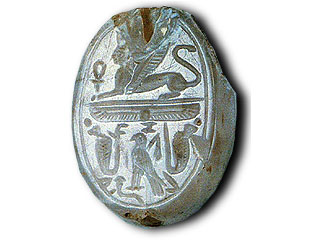
loveofthegoddess.blogspot.co.uk...
This gives insight into why the cult of Isais involved a young girl who had achieved (then) marriageable age, and would take part in such nature rituals, as the young bride to be.
Her future husband having been killed this would neccesitate searching in the Underworld...

There is correlation between the Egyptian Isis seeking out the dead Osiris and the Phoneican cult of Baal were his consort would also seek out her lost love, in connection with cultic fertility rites.
The naming of the Goddess is Iza, as in;
Jezebel is the Anglicized transliteration of the Hebrew אִיזָבֶל ('Izevel/'Izavel). Attempts to trace its original meaning are largely speculative.
The biblical Hebrew 'Izebel may be rooted in a Hebrew word for "prince/nobility" or "husband" (בעל bul/ba'al) combined with the word for "naught/none" (יי 'iy), "there is no prince/nobility/husband", suggesting a lack of character—i.e., implying lack of royal sensibilities—or of morality—i.e., unmarried, engaging in adultery or fornication. It may also find its root in a Hebrew word for "dung" (from זבל zbl; note here Ba'al-zebul/Ba'al-zebub, "Lord of dung") combined with the word for either "naught/none" ('iy) or "island" ('iyz
en.wikipedia.org...

The consideration is that there was an acclamation used in the Sidonian rebirth mysteries wherein the Priestess would cry 'iz'y'Baal' meaning 'were is my Prince' to which the response would be 'ith'y'Baal' meaning 'here is the Prince'...now the phrase 'iz'y'baal' became the name of a notorious Sidonian Princess commonly known as Jezebel, though the Hebrew scribes had changed her name to mean 'where is dung?/'iz'y'bul' in Hebrew...from Prince to dung in one fell swoop of the scribal pen, and indeed in the story Jezebul falls from on high to be eaten by dogs.
Thus in this aspect Mary Magdalene is adopting the role of the Sidonian Priestess in raising the question 'where have they laid my Lord'.
The first part then of the phrase/name is understood as inferring 'where is' or seeking, and this gives indication to the role of the young consort seeking out her lost love, in this case Baal, leading to their reunification and all being well within nature subsequently.
Jezebel was considered a Priestess of this cult as well as a Queen of Northern Israel, who was done away with, her seal has been discovered;
.

loveofthegoddess.blogspot.co.uk...
This gives insight into why the cult of Isais involved a young girl who had achieved (then) marriageable age, and would take part in such nature rituals, as the young bride to be.
Her future husband having been killed this would neccesitate searching in the Underworld...

edit on 2-4-2013 by Kantzveldt because: (no reason given)
Just skimmed this, as I don't have time to read it fully and give it the attention it deserves at the moment.
Just wanted to say, this looks very interesting, thanks for posting this. S & F.
Just wanted to say, this looks very interesting, thanks for posting this. S & F.
reply to post by Kantzveldt
Where did the female not human super being originate from exactly, inside the earth or from space?
Where did the female not human super being originate from exactly, inside the earth or from space?
reply to post by Kantzveldt
I came across this group when I was studying Tibet and the Nazi connection but to be fair there are at leas four orders which are almost impossible to distinguish from each other, the Thule society, the Vril society, the ss black sun and the lords of the black stone.
Thule is the western version of Atlantis
Vril is the occult power of sound
The black sun is the source from which all reality has sprung ie the great void
The black stone, well you have already said what that was but I think in reality nobody really knows what it is or was.
Hitler was an occultist and thus he knew about the war between the descendants of Cain (Aryans) and the Adamic race (Sethites), He discovered that the Sethites are even today trying to destroy the Aryans and wanted to put a stop to it.
I came across this group when I was studying Tibet and the Nazi connection but to be fair there are at leas four orders which are almost impossible to distinguish from each other, the Thule society, the Vril society, the ss black sun and the lords of the black stone.
Thule is the western version of Atlantis
Vril is the occult power of sound
The black sun is the source from which all reality has sprung ie the great void
The black stone, well you have already said what that was but I think in reality nobody really knows what it is or was.
Hitler was an occultist and thus he knew about the war between the descendants of Cain (Aryans) and the Adamic race (Sethites), He discovered that the Sethites are even today trying to destroy the Aryans and wanted to put a stop to it.
edit on 3-4-2013 by LUXUS because: (no reason
given)
reply to post by AthlonSavage
There is indication here;
Idun is an elf, ever young who bestows the fruit of immortality to the Gods of Valhalla;
“In the dales dwells
The prescient Dîs,
From Yggdrasil’s
Ash sunk down,
Of alfen race,
Idun by name,
The youngest of Ivaldi’s
Elder children.
She ill brooked
Her descent
Under the hoar tree’s
Trunk confined.
She would not happy be
With Norvi’s daughter,
Accustomed to a pleasanter
Abode at home.”
holynationofodin.org...
norse-mythology.org...
Idun, the rejuvening, is therefore an aspect of Isias, according to Thule tradition.
en.wikipedia.org...
In short then elvish and not of this world, though the dwarves sometimes gave her permission to visit...
This elvish maiden holds the gift of the evening star...Venus...as in popular culture.
reply to post by LUXUS
They are all related, the cult of the Vril Damen were in effect muses of Isais, looking to re-establish the link to the Heavenly realm, tthat this was seen as related to Aldebaran in Taurus is after Sumerian tradition of Ishtar at that gate, Isiais being seen as Ishtar.
Gate of Ishtar
There is indication here;
Now that her words had broken a spell , I spoke too and asked her who she was then. . and she answered immediately, "I'm Isais...Ishtar
The people who once worshipped here in this place used to call me Asherah; people in the North who were your ancestors called me- Idun - and so i was given a name by every people after their language
Idun is an elf, ever young who bestows the fruit of immortality to the Gods of Valhalla;
“In the dales dwells
The prescient Dîs,
From Yggdrasil’s
Ash sunk down,
Of alfen race,
Idun by name,
The youngest of Ivaldi’s
Elder children.
She ill brooked
Her descent
Under the hoar tree’s
Trunk confined.
She would not happy be
With Norvi’s daughter,
Accustomed to a pleasanter
Abode at home.”
As the disappearance of Idun (vegetation) was a yearly occurrence, the old scalds were not content with this one tale, but also invented another, which, unfortunately, has come down to us only in a fragmentary and very incomplete form. According to this account, Idun was once sitting upon the branches of the sacred ash Yggdrasil, when, growing suddenly faint, she loosed her hold and dropped down on the ground beneath, to the lowest depths of Niflheim. There she lay, pale and motionless, gazing with fixed and horror-struck eyes upon the grewsome sights of Hels realm, trembling violently all the while, as if overcome by the penetrating cold.
holynationofodin.org...
Idun is one of the most prominent goddesses in Norse mythology. She’s the keeper of mysterious fruits eaten by the gods, which enable them to retain their youth and ward off the process of aging. These fruits are commonly assumed to be apples, but, as Old Norse scholar E.O.G. Turville-Petre has pointed out, the word used to describe them, epli, was applied to all sorts of fruits and nuts. Proper apples were unknown in Scandinavia prior to the arrival of Christian civilization, so we may assume that, in the original tale, epli referred to some form of berries or nuts.
norse-mythology.org...
Idun, the rejuvening, is therefore an aspect of Isias, according to Thule tradition.
The name Iðunn has been variously explained as meaning "ever young", "rejuvenator", or "the rejuvenating one"
19th-century scholar Jacob Grimm proposed a potential etymological connection to the idisi. Grimm states that "with the original form idis the goddess Idunn may possibly be connected."[6] Grimm further states that Iðunn may have been known with another name, and that "Iðunn would seem by Saem. 89a to be an Elvish word, but we do not hear of any other name for the goddess.
en.wikipedia.org...
In short then elvish and not of this world, though the dwarves sometimes gave her permission to visit...
This elvish maiden holds the gift of the evening star...Venus...as in popular culture.
reply to post by LUXUS
They are all related, the cult of the Vril Damen were in effect muses of Isais, looking to re-establish the link to the Heavenly realm, tthat this was seen as related to Aldebaran in Taurus is after Sumerian tradition of Ishtar at that gate, Isiais being seen as Ishtar.
Gate of Ishtar
edit on 3-4-2013 by Kantzveldt because: (no reason given)
edit on 3-4-2013 by Kantzveldt because: (no reason given)
reply to post by Kantzveldt
There is noway that image is from the middle ages, look at the way they are dressed, who in the middle ages would be dressed like that? Also notice the vril symbol on the daggers they have held at their sides.
An engraving supposedly from the Middle Ages shows Isais in two aspects, long haired and girlish, and short haired. The second aspect relates to her adopting this boyish disguise to recover the Black Stone which had been stolen from Valhalla by the Beings of Shadow.
There is noway that image is from the middle ages, look at the way they are dressed, who in the middle ages would be dressed like that? Also notice the vril symbol on the daggers they have held at their sides.
reply to post by Kantzveldt
Very very interesting.
When you think that both the templars and the cathars were massacred by the catholic church..our history is full of secrets that better stay hidden..or else....
Very very interesting.
When you think that both the templars and the cathars were massacred by the catholic church..our history is full of secrets that better stay hidden..or else....
reply to post by LUXUS
But she was elvish and not of this world...
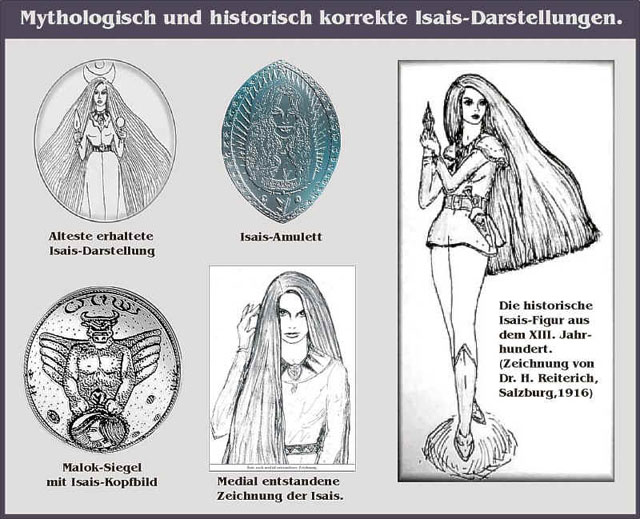
If this is a dream, it is a good dream.
But she was elvish and not of this world...

If this is a dream, it is a good dream.
edit on 3-4-2013 by Kantzveldt because: (no reason given)
This stone that the Cathars were supposed to posses, can anyone here remember the story about a group in modern times who murdered in order to try get
there hands on it. There exists a modern painting of a man holding a small chest which was said to contain the stone with light rays being emitted
from it. I remember the story that the chest was hidden in the corner wall of a modern building...cant recall the details, maybe I read the story on
ATS a while back.
reply to post by Kantzveldt
Clearly this thread seems to be a joke!
(And considering that the first of April arrived only days ago you made it nearly in time.)
A
Clearly this thread seems to be a joke!
(And considering that the first of April arrived only days ago you made it nearly in time.)
A
reply to post by Kantzveldt
Sorry. Double post due to slow connection.
A
Sorry. Double post due to slow connection.
A
edit on 3/4/2013 by Ansar because: (no reason given)
why have i never heard of Isis and Set having a daughter?
i dont believe that part one bit.
We all know Isis hated Set after Set decieved Osiris and chopped him up and floated him down the river etc.
So where is the evidence of Isis and Set having a daughter?
i dont believe that part one bit.
We all know Isis hated Set after Set decieved Osiris and chopped him up and floated him down the river etc.
So where is the evidence of Isis and Set having a daughter?
reply to post by Kantzveldt
Obviously!
I came across that neo-fascistic pseudo-feminist self-referencing sugar-coated BS-site for "ewig gestrige Spiesser-Hausfrauen" - trying to cope with the historical disadvantage that Germany has lost the "great War" - some time ago and couldn't believe what I read there.
It's right down there with Haunebus & Neuschwabenland.
Or maybe even below that.
For sure some levels below Klaus Dona & Erich von Däniken.
But it's good for a laugh anyway - as you did show here in the open.
A
Obviously!
I came across that neo-fascistic pseudo-feminist self-referencing sugar-coated BS-site for "ewig gestrige Spiesser-Hausfrauen" - trying to cope with the historical disadvantage that Germany has lost the "great War" - some time ago and couldn't believe what I read there.
It's right down there with Haunebus & Neuschwabenland.
Or maybe even below that.
For sure some levels below Klaus Dona & Erich von Däniken.
But it's good for a laugh anyway - as you did show here in the open.
A
reply to post by Ansar
Yes they certainly have their own idiosyncratic way of going about things, but as i noted in the OP my aim here was to look at the Thule Isais Revelations as given in terms of face value, and then to consider if there was any actual historic traditions regarding such a Goddess...the evidence suggests the basis is of the Celtic/Germanic Goddess Isa and the Nordic Goddess Idrun...with lots of Near Eastern Goddess' hoovered up for good measure.
reply to post by GezinhoKiko
Yes the only mention from Egypt is of Set having a daughter with the sister of Isis, Nephtys, the daughter being Khaybat, who marries Anubis...and is thus a psychopomp of the Underworld
en.wikipedia.org...
That would make more sense.
Yes they certainly have their own idiosyncratic way of going about things, but as i noted in the OP my aim here was to look at the Thule Isais Revelations as given in terms of face value, and then to consider if there was any actual historic traditions regarding such a Goddess...the evidence suggests the basis is of the Celtic/Germanic Goddess Isa and the Nordic Goddess Idrun...with lots of Near Eastern Goddess' hoovered up for good measure.
reply to post by GezinhoKiko
Yes the only mention from Egypt is of Set having a daughter with the sister of Isis, Nephtys, the daughter being Khaybat, who marries Anubis...and is thus a psychopomp of the Underworld
en.wikipedia.org...
That would make more sense.
edit on 3-4-2013 by Kantzveldt because: (no reason given)
reply to post by Kantzveldt
"idiosyncratic" - that's a good one for sure.
I would have said "totally made up" but maybe "idiosyncratic" is a new way to say it?
It's more polite and a little bit humoristic - so I'll g with that.
What bothers me with your "at face value" thing is that it seems to me the same as if I had heard someone talking about Santa Claus to his children - and then setting up an expedition to the North-pole to find his abode in the snowy realm.
It could be - because there is a saint (St. niCoLAUS) still worshiped in the catholic church today and Coca-cola must have gotten their idea for their advertise stunt back in the day from somewhere.
Now why shouldn't the stories about chimneys and a red nosed reindeer and milk and chocolate and presents not also be true?
The answers will be found at the North-pole...
In December you can make a thread on this one - if you like to take that "on face value".
I'd give you a star&flag - I promise - but in December. Not right now for this debacle.
A
"idiosyncratic" - that's a good one for sure.
I would have said "totally made up" but maybe "idiosyncratic" is a new way to say it?
It's more polite and a little bit humoristic - so I'll g with that.
What bothers me with your "at face value" thing is that it seems to me the same as if I had heard someone talking about Santa Claus to his children - and then setting up an expedition to the North-pole to find his abode in the snowy realm.
It could be - because there is a saint (St. niCoLAUS) still worshiped in the catholic church today and Coca-cola must have gotten their idea for their advertise stunt back in the day from somewhere.
Now why shouldn't the stories about chimneys and a red nosed reindeer and milk and chocolate and presents not also be true?
The answers will be found at the North-pole...
In December you can make a thread on this one - if you like to take that "on face value".
I'd give you a star&flag - I promise - but in December. Not right now for this debacle.
A
reply to post by Ansar
If that 'someone', in your analogy, was Odin, i would be amused and impressed in equal measure.
It's perhaps worth keeping in mind that the husband of Idrun was Bragi, the foremost of scalds, the art of story telling, were face value truth is not always the primary concern.
An important aspect of our story here is the discovery and excavation of Ninevah in the 19th century, the unearthing of artifacts relating to the cult of Ishtar, depicting her relationship to the bull Taurus and the suggestion of a gateway associated with this celestial arrangement...and her function as an intermediary in Near Eastern lore.
Whether through the channeling of long haired mystics or the development of a nuts and bolts mode of conveyance, the dream was to re-establish contact with this Goddess, who also had archetypal manifestation in Germanic lore...though her gateway was the entrance into the Underworld as it turned out.
But still, a good story.
If that 'someone', in your analogy, was Odin, i would be amused and impressed in equal measure.
It's perhaps worth keeping in mind that the husband of Idrun was Bragi, the foremost of scalds, the art of story telling, were face value truth is not always the primary concern.
An important aspect of our story here is the discovery and excavation of Ninevah in the 19th century, the unearthing of artifacts relating to the cult of Ishtar, depicting her relationship to the bull Taurus and the suggestion of a gateway associated with this celestial arrangement...and her function as an intermediary in Near Eastern lore.
Whether through the channeling of long haired mystics or the development of a nuts and bolts mode of conveyance, the dream was to re-establish contact with this Goddess, who also had archetypal manifestation in Germanic lore...though her gateway was the entrance into the Underworld as it turned out.
But still, a good story.
new topics
-
Russian intelligence officer: explosions at defense factories in the USA and Wales may be sabotage
Weaponry: 1 hours ago -
African "Newcomers" Tell NYC They Don't Like the Free Food or Shelter They've Been Given
Social Issues and Civil Unrest: 2 hours ago -
Russia Flooding
Other Current Events: 3 hours ago -
MULTIPLE SKYMASTER MESSAGES GOING OUT
World War Three: 4 hours ago -
Two Serious Crimes Committed by President JOE BIDEN that are Easy to Impeach Him For.
US Political Madness: 5 hours ago -
911 emergency lines are DOWN across multiple states
Breaking Alternative News: 5 hours ago -
Former NYT Reporter Attacks Scientists For Misleading Him Over COVID Lab-Leak Theory
Education and Media: 7 hours ago -
Why did Phizer team with nanobot maker
Medical Issues & Conspiracies: 7 hours ago -
Pro Hamas protesters at Columbia claim hit with chemical spray
World War Three: 7 hours ago -
Elites disapearing
Political Conspiracies: 9 hours ago
top topics
-
British TV Presenter Refuses To Use Guest's Preferred Pronouns
Education and Media: 17 hours ago, 17 flags -
Go Woke, Go Broke--Forbes Confirms Disney Has Lost Money On Star Wars
Movies: 11 hours ago, 13 flags -
Pro Hamas protesters at Columbia claim hit with chemical spray
World War Three: 7 hours ago, 11 flags -
Elites disapearing
Political Conspiracies: 9 hours ago, 8 flags -
Freddie Mercury
Paranormal Studies: 12 hours ago, 7 flags -
Nirvana - Immigrant Song
Music: 16 hours ago, 5 flags -
A Personal Cigar UFO/UAP Video footage I have held onto and will release it here and now.
Aliens and UFOs: 10 hours ago, 5 flags -
African "Newcomers" Tell NYC They Don't Like the Free Food or Shelter They've Been Given
Social Issues and Civil Unrest: 2 hours ago, 5 flags -
Two Serious Crimes Committed by President JOE BIDEN that are Easy to Impeach Him For.
US Political Madness: 5 hours ago, 5 flags -
911 emergency lines are DOWN across multiple states
Breaking Alternative News: 5 hours ago, 4 flags
active topics
-
Elites disapearing
Political Conspiracies • 19 • : annonentity -
Russian intelligence officer: explosions at defense factories in the USA and Wales may be sabotage
Weaponry • 14 • : RussianTroll -
Why did Phizer team with nanobot maker
Medical Issues & Conspiracies • 6 • : annonentity -
Israel ufo shoot down drones?
Aliens and UFOs • 26 • : GENERAL EYES -
African "Newcomers" Tell NYC They Don't Like the Free Food or Shelter They've Been Given
Social Issues and Civil Unrest • 4 • : GENERAL EYES -
The Acronym Game .. Pt.3
General Chit Chat • 7722 • : bally001 -
Two Serious Crimes Committed by President JOE BIDEN that are Easy to Impeach Him For.
US Political Madness • 7 • : Disgusted123 -
Russia Flooding
Other Current Events • 1 • : ksihkahe -
Running Through Idiot Protestors Who Block The Road
Rant • 107 • : FlyersFan -
Russia Ukraine Update Thread - part 3
World War Three • 5694 • : F2d5thCavv2

